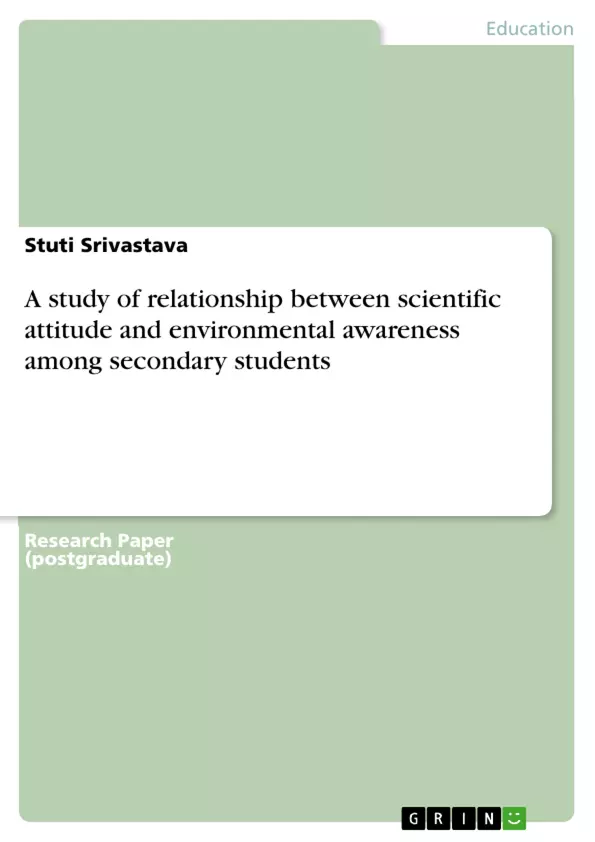Environmental education should have been given high priority. It extends to create awareness about the environment among the students. This study uses the descriptive type survey approach. The sample for the study consisted of 152 students (30 boys & 39 girls of class IX and 35 boys & 48 girls of class XI respectively) studying in Hindi medium U P Board schools of Allahabad city. The tools used were Environmental Awareness Test and Scientific Attitude questionnaire of K. S. Misra.
Product- moment coefficient of correlation was computed for the analysis of the data.
The environmental education conference at Tbilisi (USSR) in 1977 identified its ultimate aim as creating awareness, behavioural, attitudes and values directed towards preserving the biosphere, the quality of life everywhere as well on safeguarding ethical values and cultural and natural heritage, including holy places, historical landmarks, works of arts, monuments and sites, human and natural environment, including fauna and flora and human settlements. The Intergovernmental Conference on Environmental Education (UNESCO, 1978) recommended the primary categories of the environmental education curriculum goals and objectives of (a) awareness, (b) knowledge, (c) attitudes, (d) skills, (e) participation.
Inhaltsverzeichnis (Table of Contents)
- INTRODUCTION
- Objective of the study:
- Hypotheses of the study:
- Methodology of the study:
Zielsetzung und Themenschwerpunkte (Objectives and Key Themes)
This study aims to investigate the relationship between environmental awareness and scientific attitude among secondary students, specifically focusing on Class IX and Class XI students in Allahabad city, India. The research explores whether there is a significant correlation between these two factors for both boys and girls in the respective classes.
- The relationship between environmental awareness and scientific attitude.
- The influence of scientific attitude on environmental decision-making.
- The impact of different learning environments on environmental awareness.
- The potential role of specific components of scientific attitude, such as open-mindedness, critical thinking, and willingness to change opinions, in fostering environmental awareness.
Zusammenfassung der Kapitel (Chapter Summaries)
The introduction provides a background on the importance of environmental education and its role in cultivating awareness, attitudes, and values towards environmental protection. It highlights the significance of science education in developing environmental awareness and the potential connection between scientific attitude and environmental decision-making.
The study's objectives and hypotheses are outlined, focusing on the relationship between environmental awareness and scientific attitude among Class IX and Class XI students, both boys and girls. The methodology section describes the descriptive survey approach used, the sample size, the schools involved, and the tools employed to measure environmental awareness and scientific attitude. The tools used were the Environmental Awareness Test and the Scientific Attitude questionnaire developed by K. S. Misra.
Schlüsselwörter (Keywords)
Environmental awareness, scientific attitude, secondary students, environmental education, science education, correlation, learning environment, open-mindedness, critical thinking, willingness to change opinions, environmental decision-making, descriptive survey approach, Environmental Awareness Test, Scientific Attitude questionnaire.
- Quote paper
- Stuti Srivastava (Author), 2013, A study of relationship between scientific attitude and environmental awareness among secondary students, Munich, GRIN Verlag, https://www.grin.com/document/304376



